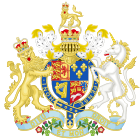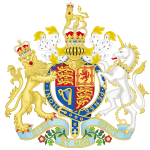- Calendar (New Style) Act 1750
-
Calendar (New Style) Act 1750 
Parliament of Great BritainLong title An Act for Regulating the Commencement of the Year; and for Correcting the Calendar now in Use Statute book chapter 1750 c. 23 Introduced by Lord Chesterfield Territorial extent England and Wales
ScotlandDates Commencement 1 January 1752 Other legislation Amendments Calendar Act 1751 Status: Current legislation Text of statute as originally enacted Official text of the statute as amended and in force today within the United Kingdom, from the UK Statute Law Database The Calendar (New Style) Act 1750 (c.23) (also known as Chesterfield's Act after Philip Stanhope, 4th Earl of Chesterfield) is an Act of the Parliament of Great Britain. It reformed the calendar of England and British Dominions so that a new year began on 1 January rather than 25 March (Lady Day) and would run according to the Gregorian calendar, as used in most of western Europe.
Contents
Reasons for change
The Parliament held that the Julian calendar then in use, as well as the start of the year being 25 March was
“ attended with divers inconveniences, not only as it differs from the usage of neighbouring nations, but also from the legal method of computation in Scotland, and from the common usage throughout the whole kingdom, and thereby frequent mistakes are occasioned in the dates of deeds and other writings, and disputes arise therefrom.[1] ” England
In England, the year 1751 was a short year of 282 days, running from 25 March to 31 December. 1752 began on 1 January.
To align the calendar in use in England to that in use on the continent, the changes introduced in 1582 by the Gregorian calendar were adopted with effect in 1752. To this end, the calendar was advanced by 11 days: Wednesday 2 September 1752 was followed by Thursday 14 September 1752.[2] The other changes brought about by Gregory were also adopted : the better rules for Leap Years and for the date of Easter.
Scotland
Scotland had already made the change to having the year begin on 1 January in 1600 but adopted the Gregorian calendar only in 1752.[3][4]
Reaction and effect
It has been reported in some history books that a number of the public rioted after the calendar change, requesting that their "eleven days" be returned. However, it is very likely this is a myth, being based on only two primary sources: The World, a satirical journal of Lord Chesterfield and a painting by William Hogarth.[5]
Chesterfield was behind the Calendar Reform Act of 1750. In one of his letters to his son he writes, "Every numerous assembly is a mob, let the individuals who compose it be what they will. Mere sense is never to be talked to a mob; their passions, their sentiments, their senses and their seeming interests alone are to be applied to. Understanding have they collectively none." Here, he was boasting of his skill in having the Bill passed through the Lords; the 'mob' in question was his fellow peers.[citation needed]
When the son of the Earl of Macclesfield (who had been influential in passing the calendar law) ran for a seat in Parliament in Oxfordshire as a Whig in 1754, dissatisfaction with the calendar reform was one of a number of issues raised by his Tory opponents. In 1755, William Hogarth made a painting (and an engraved print from the painting) loosely based on these elections, entitled An Election Entertainment, which shows a placard carrying the slogan "Give us our Eleven Days" (on floor at lower right). An example of the resulting incorrect history is by Ronald Paulson, author of Hogarth, His Life, Art and Times, who wrote that "...the Oxfordshire people...are specifically rioting, as historically the London crowd did, to preserve the 'Eleven Days' the government stole from them in September 1752 by changing the calendar."[5]
And thus it was that the "calendar riot" fiction was born. The election campaign depicted was one which concluded in 1754, after a very lengthy contest between Court Whigs and Jacobite Tories. Literally every issue between the two factions was brought up, including the question of calendar reform. The Tories attacked the Whigs for every deviation, including their alleged favoritism towards foreign Jews and the "Popish" calendar. Hogarth's placard, part of a satire on the character of the debate, was not an observation of actual crowd behaviour.[5]
There were, however, legitimate concerns about tax payments under the new calendar. Under provision 6 (Times of Payment of Rents, Annuities) of the Act, Great Britain made special provisions to make sure that monthly or yearly payments would not become due until the dates that they originally would have in the Julian calendar, or in the words of the act "[Times of Payment of Rents, Annuities] at and upon the same respective natural days and times as the same should and ought to have been payable or made or would have happened in case this Act had not been made".[1]
Several theories have been proposed for the odd beginning of the British financial year on 6 April.[6] One is that from 1753 until 1799, the tax year in Britain continued to operate on the Julian calendar and began on 5 April, which was the "old style" new tax year of 25 March. A 12th skipped Julian leap day in 1800 changed its start to 6 April. It was not changed when a 13th Julian leap day was skipped in 1900, so the tax year in the United Kingdom still begins on 6 April.[7][8] Poole thought that quarter days, such as Lady Day 25 March, marked the end of the financial quarters of the year.[5]:note 77 Thus, although 25 March Julian marked the beginning of the civil year, the next day, 26 March Julian was the beginning of the financial year before 1752. After removing eleven days in 1752, this corresponded to 6 April Gregorian, where it remains today. Although Poole's theory is supported by one dictionary,[9] the Oxford English Dictionary and another dictionary as well as other sources state that quarter days mark the beginning of their respective quarters.[10][11][12][13]
Notes
- ^ a b Official text of the statute as amended and in force today within the United Kingdom, from the UK Statute Law Database
- ^ See Cal (Unix)#Features and the Oracle Solaris manual: "An unusual calendar is printed for September 1752. That is the month 11 days were skipped to make up for lack of leap year adjustments".
- ^ Spathaky, Mike Old Style and New Style Dates and the change to the Gregorian Calendar
- ^ John J. Bond, Handy-book of rules and tables, footnote on pages xvii–xviii (1875). Original text of the Scottish decree.]
- ^ a b c d Robert Poole, "'Give us our eleven days!': calendar reform in eighteenth-century England", Past & Present 149(1) (November 1995) 95–139, section I. See also Duncan Steele, Marking Time, p. 249
- ^ HM Revenue & Customs: Frequengly Asked Questions: Why does the tax year start on April 6?, HM Revenue & Customs. Retrieved 2008-12-04.
- ^ Philip, Alexander (1921). The calendar; its history, structure and improvement. Cambridge: University Press. p. 24.
- ^ Income Tax Act 2007, s. 4(3)
- ^ "Quarter day - Webster's 1913 dictionary". Webster-dictionary.org. http://www.webster-dictionary.org/definition/Quarter. Retrieved 2010-09-14.
- ^ Oxford English Dictionary quarter day, n.: "Each of the four days fixed by custom as marking off the quarters of the year, ... the payment of rent and other quarterly charges fall due, ... In England ... the quarter days are traditionally Lady Day (March 25),..."
- ^ quarter day - Webster's Third New International Dictionary
- ^ "Quarter Days". Landlordzone.com. 2006-04-15. http://www.landlordzone.co.uk/quarter_days.htm. Retrieved 2010-09-14.
- ^ "Quarter day". Yourdictionary.com. http://www.yourdictionary.com/quarter-day. Retrieved 2010-09-14.
References
- An act for regulating the commencement of the year; and for correcting the calendar now in use, Statutes at Large, volume 20, 1765. The original 1750/51 Act.
- The Parliamentary history of England, Volume 14 (1813) cols 979–992. First and second readings of the bill before the House of Lords on 25 February and 18 March (Old Style) 1750/51. Passed Lords without debate.
- Robert Poole, Time's alteration: Calendar reform in early modern England (London: UCL Press, 1998) 100. Bill amended in House of Commons. Received royal assent 22 May (OS) 1751.
- Official text of the Calendar (New Style) Act 1750/51 as in force today (including any amendments) within the United Kingdom, from the UK Statute Law Database
- An act to amend an act made in the last session of parliament, (intituled, An act for regulating the commencement of the year, and for correcting the calendar now in use.) Statutes at Large, volume 20, 1765. First amendment (1751/52) to the original Act.
- Official text of the Calendar Act 1751/52 as in force today (including any amendments) within the United Kingdom, from the UK Statute Law Database
Further reading
- Healton, Gilbert Year, Date, and Time Information How people and computers use dates and times
- Nørby, Toke. The Perpetual Calendar: What about England
- Stockton, J.R. Date Miscellany I: The Old and New Styles
- Staff. Guide to the Quaker Calendar, website of the Quakers. Accessed 28 December 2007
- Staff. Calendar (New Style) Act 1750, WebExhibits (N.B.: enacted in civil year 1751); (Source: Adapted from Gilbert Healton – see above). Accessed 28 December 2007
 United Kingdom legislation
United Kingdom legislationPre-Parliamentary legislation Acts of Parliament by states preceding
the Kingdom of Great BritainActs of the Parliament of England to 1483 · 1485–1601 · 1603–1641 · Interregnum (1642–1660) · 1660–1699 · 1700–1706
Acts of the Parliament of Scotland
Acts of the Parliament of Ireland to 1700 · 1701–1800Acts of Parliament of the
Kingdom of Great Britain1707–1719 · 1720–1739 · 1740–1759 · 1760–1779 · 1780–1800
Acts of Parliament of the United Kingdom of
Great Britain and Ireland and the United
Kingdom of Great Britain and Northern IrelandChurch of England Measures Legislation of devolved institutions Acts of the Scottish Parliament
Acts and Measures of the Welsh Assembly
Acts of the Northern Ireland Assembly / of the Northern Ireland Parliament
Orders in Council for Northern IrelandSecondary legislation Categories:- Calendars
- Great Britain Acts of Parliament 1750
- 1750 in Great Britain
- Acts of the Parliament of Great Britain
Wikimedia Foundation. 2010.


